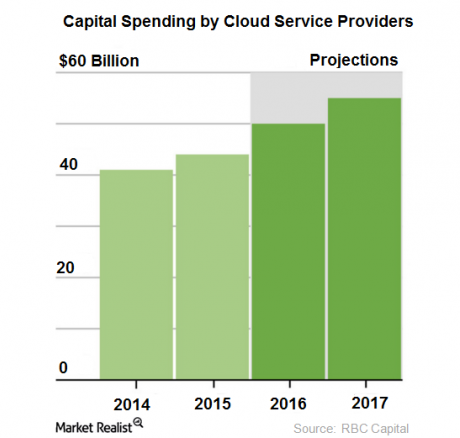Will 5G & IoT Apps Go to NFV or Public Cloud?

OK, let's get telecom geeky. Network Functions Virtualization (NFV) and OpenStack. These are hyped technologies. Are they winning or dying?
NFV and one of its subset components, OpenStack, are technologies that have fired up the telecom equipment market for some time because they represent a sea change in the way the telcos deploy networks. But recently, there's been increased criticism of their development, focused around the fact that it's not happening fast enough. In particular, OpenStack has been been perennially questioned, because it's open-source, complex, and therefore requires lots of expertise to deploy. Recently there have been accusations that "OpenStack is Dead."
Many of the discussions I witness in telecom forums about these technologies get very technical and geeky. Many people are missing the point. The point is to make money. I think maybe there should be a bigger question about either NFV or OpenStack: Will they succeed in helping telcos growing new services and revenue?
Virtualizing Telecom
First, let's rewind a bit and explore why NFV exists. The goal is to build a communications platform based on open networking and cloud technologies to "cloudify" the telcos, so they can be more nimble and efficient in deploying services and applications.
Because there are billions of dollars at stake in the telco equipment and software market, NFV represents a huge opportunity for major shifts in leadership and market share, which are rare in an industry that has plodded along methodically for decades. But there are also huge risks -- both for the telcos, who need to get it right, and the vendors, who need to attack the market astutely.
Just to be clear, NFV is a viable market with thousands of participants and hundreds of vendors -- and billions in revenue. Some of this technology is already being deployed, and AT&T says it's using it to virtualize its entire network. But our expectations should be calibrated. This does not mean that equipment vendors are suddenly going to get rich, or that service providers are suddenly going to grow like Amazon. And that's part of the problem.
The number of animals chasing the food is exceptional. And the food tends to be stashed in a small number of large piles, protected by wary and budget-conscious consumers, known as the telco capital spending chieftains. At the same time, the telcos are using NFV technologies to reduce their capital spending. A brutal shakeout is coming.
That's not to say these technologies aren't in production and in some cases very useful. CERN, the European Laboratory for Particle Physics, is running OpenStack for its private cloud to process the Universe. That's impressive. In telecom, both AT&T and Verizon have pledged to move to NFV quickly in order to move to a more flexible virtualized system for deploying services and applications.
Private Cloud for Telecom?
The bigger concerns come at the macro level. How, in the end, how will the telcos use these platforms? Will they use them to fine-tune their networks, or will they use them to deploy exciting new applications for the explosive markets such as connected cars, smart cities, and the business cloud?
Maybe the big problem is that NFV is evolving into private cloud for telecom. What about the public cloud, though? In the end, this may be the ultimate competition. The success of NFV will come down to which applications are built on top of it, and whether the most profitable applications get deployed in the telco cloud, versus public or external clouds. Otherwise, the telcos have the Netflix problem on their hands all over again.
Example: It's fashionable in boring technology presentations to laud the capabilities of NFV for deploying technologies such as 5G and IoT. Just talk more about "network slicing." But what's the business case for these technologies? What are the most exciting applications? Who hosts them?
Um, yeah. It's possible that many of the useful business applications for these next-generation networks get deployed in a cloud other than the telcos. For example, many of the most impressive IoT analytics applications are hosted in cloud, not on telco NFV platforms. I would argue that Amazon and Microsoft are going to benefit more from IoT than AT&T or Verizon.
Follow the Money!
If you want to get really crass, just look at the money. Telcos are slowing their capital spending. Amazon, Google, and Azure are increasing their capital spending. Cloud capital spending was recently pegged at about $50 billion and is growing 20-30 percent annually, according to many estimates for investment banks and research firms such as IDC. Research firm TBR says public cloud revenue will increase from $80 billion in 2015 to $167 billion in 2020, driving more of this investment. See the chart below.
The Futuriom Ultimate Industrial Internet of Things (IIoT) Report covers a wide range of communications and cloud technologies that are being applied to businesses around the world to provide connectivity, analysis, automation, and optimization of a range of industrial applications. For Futuriom community members, we are offering a special discount on a one-user license to this report for 20% off, which means you pay only $760! Go to the report page and use discount code "EDGE" for purchase.

Telco capital spending is a much larger market, estimated by IHS Markit to be in the $340 billion range, but it is growing much more slowly, and in some cases has actually shrunk. For example, some carriers such as AT&T have held their budgets flat. To see a clear demonstration of this trend, take a look at the charts below.
It other words -- it looks to me like infrastructure and service revenue is growing much faster in the public cloud market. Amazon has deployed billions in new capital to build one of the most massive clouds in the world. It has proven that these investments are worthwhile, because the cloud is all about scale. Follow the money!
What's the telco strategy? We need a bigger story than just building NFV to host 5G network slicing. The success of NFV and OpenStack will depend on their ability to scale to host exciting new applications and services. If they end up being nothing more than glorified traffic cops, most of the bits will just pass through from the consumer to the public cloud, thereby keeping telecoms relegated to their lowly pipe-building status.
In other words, it's possible that NFV and OpenStack have been left on islands -- optimized telco private clouds -- that just aren't that exciting a market.




